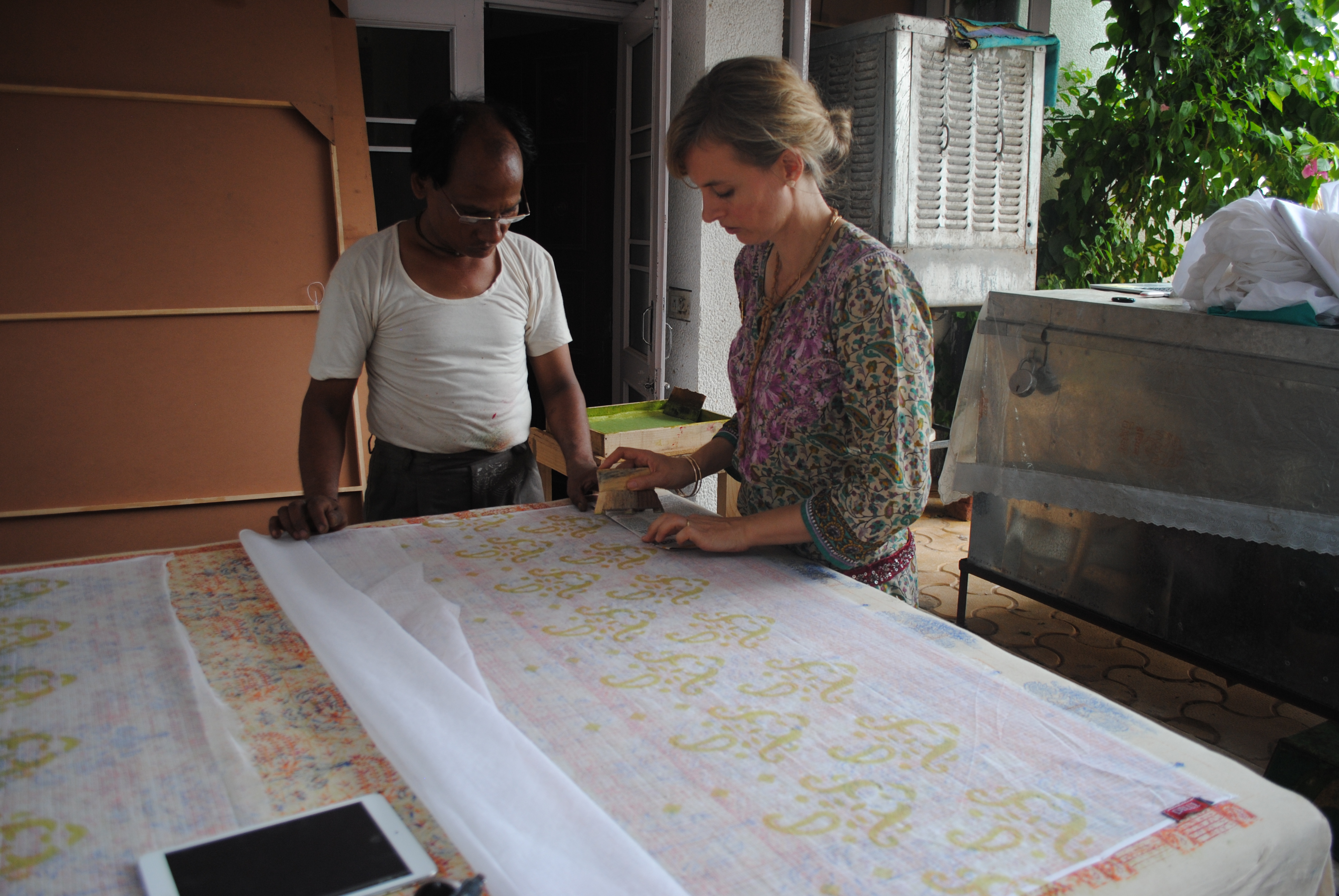I was born into a family of makers, folk with something always on the go. Knitting and crochet, embroidery, woodturning, pottery, painting and photography. Their passionate travel streak also meant my childhood home was brim-full of exciting handcrafted artefacts, textiles and stories from faraway places, fuelling my fascination for creativity.
My bowerbird instincts and global sensibility have taken me on travels all over the world, as I collect not only inspiration and ideas, but tangible objects to create and make with. Since my time at art school, my art and design practice has been founded on translating discarded, unwanted objects and end-of-life materials into beautiful artefacts, most often found along my travels.
Global foraging and travelling fires my imagination. My favourite pieces to forage for are textiles – I am completely seduced by the colours, textures, patterns and the stories they tell. I highly value the heritage of craftsmanship and the preservation of traditional textile techniques and this has led me on many textiles explorations around the globe.
Pivotal to my creative practice has been my travels in South East Asia. My mother spent 10 years living in the region and as a result I would spend months at a time living and travelling with her. This is how I developed my woven pleated hats made from grass fibres which are handwoven on looms in my studio. I highly recommend travelling in South East Asia, their street cultures, traditions and textiles are seductive and provide so much creative inspiration.
India stands as one of my favourite places to travel to for textiles. I have spent large periods of time in India studying embroidery, block printing, miniature painting, floristry and Sanjhi paper-cutting. I would definitely advise spending time with makers and artisans, observing, learning and practising their textiles techniques. The knowledge and wisdom gained from these experiences is something money can’t buy!
I particularly love the market places in the North of India for vintage and antique textiles pieces, specifically textile panels. Usually, these textile panels have been removed from garments and sold as individual pieces. What might have been worn on a woman’s skirt is transferred onto a child’s jacket. As they are handcrafted, they are of such high quality, allowing them to live on in other ways with other people. I love the rustic nature of the frayed edges and believe the back view of the panels is just as interesting as the front as they carry the signature of the maker. I find the tactility of hand-dyed, embroidered and handwoven textiles very seductive. Each region often has its own symbols and motifs which communicate their own unique stories.
I am a very spontaneous traveller, preferring to go with the flow. I don’t make plans, so even if I have a loose plan, if and when things change, I don’t tend to view it negatively because there was never a plan in the first place! One time, I ended up travelling to India in the winter season and not the summer. The outcome was better than I expected it would be as I was able to see all the different traditional winter fashions I otherwise wouldn’t, such as in Delhi and Haridwar, at the top of the Ganges. Being open to happenstance is important, because it opens your mind to possibilities you might not otherwise have considered.
One of my favourite techniques from around the globe is the bobbin lace making in Malta. I adore the intricate, delicate work and the way in which visual stories are created in the lace. We have almost lost the craftsmanship of traditional lacemaking, but I hope it can be revived as it is one of the most mesmerising art forms.
Closer to home, I have spent time travelling in the Northern Territory Australia, where I have worked with Indigenous women and Aboriginal elders to create natural dyes for grass fibres that would be made into dilly bags. The way these Indigenous Australian women mindfully practice their traditional textiles art forms is so inspiring. This is one of the most culturally rich experiences I have had and allowed me to have a greater understanding of the history of Aboriginal culture, the oldest continuous civilisation on earth.
I believe travel is one of the best things in life to invest in as it offers fresh perspectives, new experiences, changes of scenery and opportunities to build upon one's own understanding of other cultures and religious beliefs. Whether you are in the art or design world, travelling with textiles in mind can provide an even richer and more meaningful adventure, as you experience the heritage of a culture through the lens of creativity and craftsmanship.
Shop the article
Read more
WORLD
How Can Travel Fuel Creativity?
I was born into a family of makers, folk with something always on the go....
WORLD
The Silence Of Portage
You’d be forgiven for not having heard of portage (or portaging). Literally,...
WORLD
We're Heading To Los Angeles!
Following a year of significant growth and demonstration of love for...
WORLD
Conscious Tourism: How To Travel Responsibly
We’ve had a notable year and a half. The pandemic tested us and twisted us....
WORLD
An Index Of Rare Plants With By Moumi
My father has been a plant collector for as long as I remember. Talk to him...



